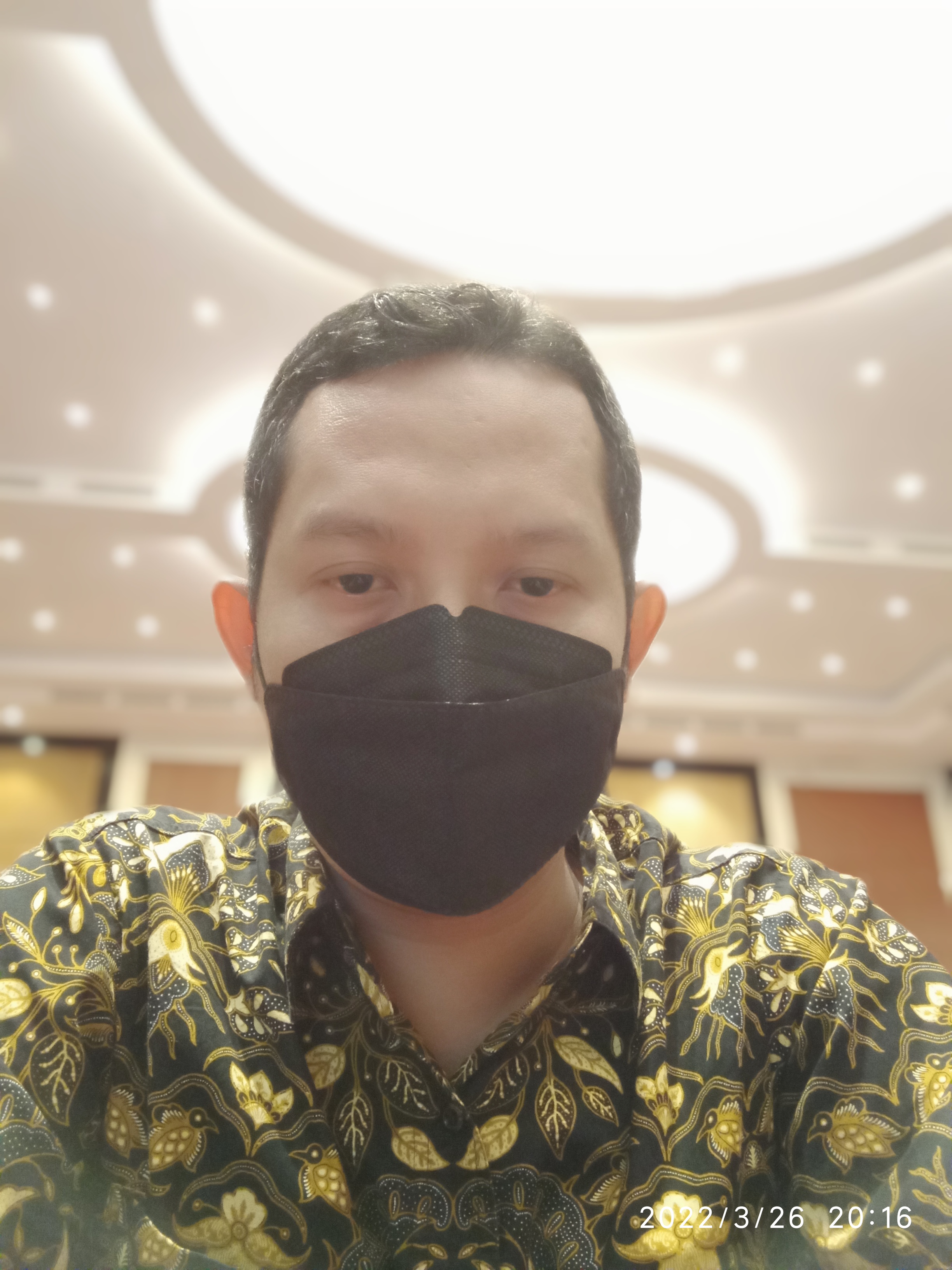Keefektifan penggunaan teknik digital smart finger dalam pengajaran reported speech
Abstract
Tujuan dari penelitian ini adalah untuk mengetahui efektif atau tidaknya penggunaan teknik Digital Smart Finger dalam pembelajaran report speech di kelas X SMK Muhammadiyah Kajen. Penelitian ini menggunakan metode kuantitatif. Subyek penelitian adalah 32 siswa. Data diambil dari pre-test dan post-test. Hasil penelitian menunjukkan bahwa nilai rata-rata pretest adalah 60,37 dan posttest adalah 67,06. Setelah mengetahui data pre-test dan post-test berdistribusi abnormal, dilakukan uji lanjut menggunakan rumus U Mann Whitney untuk mengetahui apakah penggunaan teknik smart finger efektif atau tidak dalam pengajaran report speech. Hasil menunjukkan bahwa nilai Asymp. Sig (2tailed) 0.49 > 0.05. Berdasarkan hasil tersebut nilai Z 0,0037 < 1,791, artinya tidak ada perbedaan yang signifikan dalam pengajaran materi report speech, sehingga penggunaan teknik ini sudah sesuai untuk siswa kelas X SMK Muhammadiyah Kajen.
References
Arikunto, S. (2010). Prosedur Penelitian Suatu Pendekatan Praktik. Rineka Citra.
Brown, H. D. (2008). Language Assessment: Principles and Classroom Practices (3rd ed.). Pearson Education, Inc.
Edi Sunjayanto Masykuri, I., Ike Nugraeni, J. Kumar. (2022). Performing Discourse Student’s Skill by Using Video. In Islam, Media, and Education in Digital Era (pp. 336–319). Taylor and Francis.
Edi Sunjayanto Masykuri, S. W., Marcelo Perez. (2019). Understanding personal intention by elaborating speech function using social media international whatsapp group. The Proceeding 2nd International Conference on Education.
Foulk, T., Woolum, A., & Erez, A. (2016). Catching rudeness is like catching a cold: The contagion effects of low-intensity negative behaviors. Journal of Applied Psychology, 101(1), 50– 67.
Hakim, R. (2015). 16 Tenses (5th ed.). Pustaka Widyatama.
Halliday, M. A. K., & Hasan, R. (1985). Language , context, and text: Aspects of language ina social-semiotic perspective. Brown Prior Anderson Pty Ltd.
Harpaz, Y. (2014). Teaching and Learning in Community of Thinking. Springer Science and Business Media. https://doi.org/10.1007/978-94-007-6940-3
Joshi, M. (2013). Direct and Indirect Speech: English Speaking. Createspace Independent Publishing Platform.
Kemendikbud. (2013). Modul Pelatihan Implementasi Kurikulum. Badan Pengembangan SDM dan Pendidikanmdan kebudayaan.
Khabib Sholeh, E. S., Bagiya Bagiya, Frida Nur Aini, Main Sufanti. (2020). Pengaruh Media Cetak dan Audio Visual Terhadap Kemampuan Menulis Teks Berita pada Siswa MTs Bergaya Kognitif Field Dependent dan Field Independent. Jurnal Pendidikan Surya Edukasi (JPSE), 6(1), 33–48.
Khafidah, W., Wildanizar, W., ZA, T., Nurhayati, N., & Raden, Z. (2020). The Application of Wahdah Method in Memorizing the Qur’an for Students of SMPN 1 Unggul Sukamakmur. International Journal of Islamic Educational Psychology Universitas Muhammadiyah Yogyakarta, 01, 37–49. https://doi.org/10.18196/ijiep.1104
Khotimah, K., Sunjayanto, E., & Istiqhfarin, I. (2017). Combining new technology in elt to create innovation in student’s learning. 1(1).
Kothari, C., Kumar, R., & Uusitalo, O. (n.d.). Research Methodology: A step-by-step guide for beginners (3rd ed.).
Latifah, E. S. M. M. W., & Nuraini, F. (2017). Pragmatic studies: the use of code-switching in javanese art performance done by students of SMPN 1 Kesesi Kabupaten Pekalongan. 2(1).
Masykuri, E. S. (2015). Analysis the Clauses Using Modal with Perfect Infinitive on Novel the Other Side of Midnight and Its Translation in Bahasa Indonesia. Jurnal Pendidikan Surya Edukasi, 1(1), 121670.
Masykuri, E. S. (2017). Three Character Building by Using Comik Wayang. Jurnal Pendidikan Surya Edukasi, 2(2), 1–13.
Purwoko, R. Y. (2017). Urgensi Pedagogical Content Knowledge dalam Meningkatkan Kualitas Pembelajaran Matematika. Jurnal Pendidikan Surya Edukasi (JPSE), 3(2), 42–55.
Purwoko, R. Y., Nugraheni, P., & Instanti, D. (2019). Implementation of pedagogical content knowledge model in mathematics learning for high school. Journal of Physics: Conference Series, 1254(1), 1–6. https://doi.org/10.1088/1742-6596/1254/1/012079
Setiyorini, T. J., Dewi, P., & Masykuri, E. S. (2020). The Grammatical Error Analysis Found in Students’ Composition. Lensa: Kajian Kebahasaan, Kesusastraan, Dan Budaya, 10(2), 218–233.
Smith, M. K. (2020). Learning Theory. The Encyclopedia of Pedagogy and Informal Education. https://infed.org/mobi/learning-theory-models-product-and-process/.
Sudirman, A. (2015). The Implementation of Smart Finger Technique in Improving Student’s Tenses Mastery at First Semester Student of English Department of Mathla’ul Anwar University. http://journal.unsika.ac.id/index.php/judika/article/view/207.
Sugiyono. (2010). Metode Penelitian Pendidikan Pendekatan Kuantitatif, Kualitatif, dan R&D. Alfabeta.
Sutrino, H. (2014). Pintar Jari Tenses. Indonesia Tera.
Tri Indrijaningrum, P. S., & Hamdan, M. (2020). Correlation Between Frecuency and Duration on Reading the Qur’an with Cognitive Function at Elderly. International Journal of Psychosocial Rehabilitation, Vol. 24(02), 4062–4071. https://doi.org/10.37200/IJPR/V24I2/PR200727
Xavier, & et al. (2020). Grammar in Writing: Teachers’ Reflections. Journal of Language Teaching and Learning, 200–221.
Ying, C. L., Osman, S., Kurniati, D., Masykuri, E. S., Kumar, J. A., & Hanri, C. (2020). Difficulties that Students Face when Learning Algebraic Problem-Solving. Universal Journal of Educational Research, 8(11), 5405–5413.









